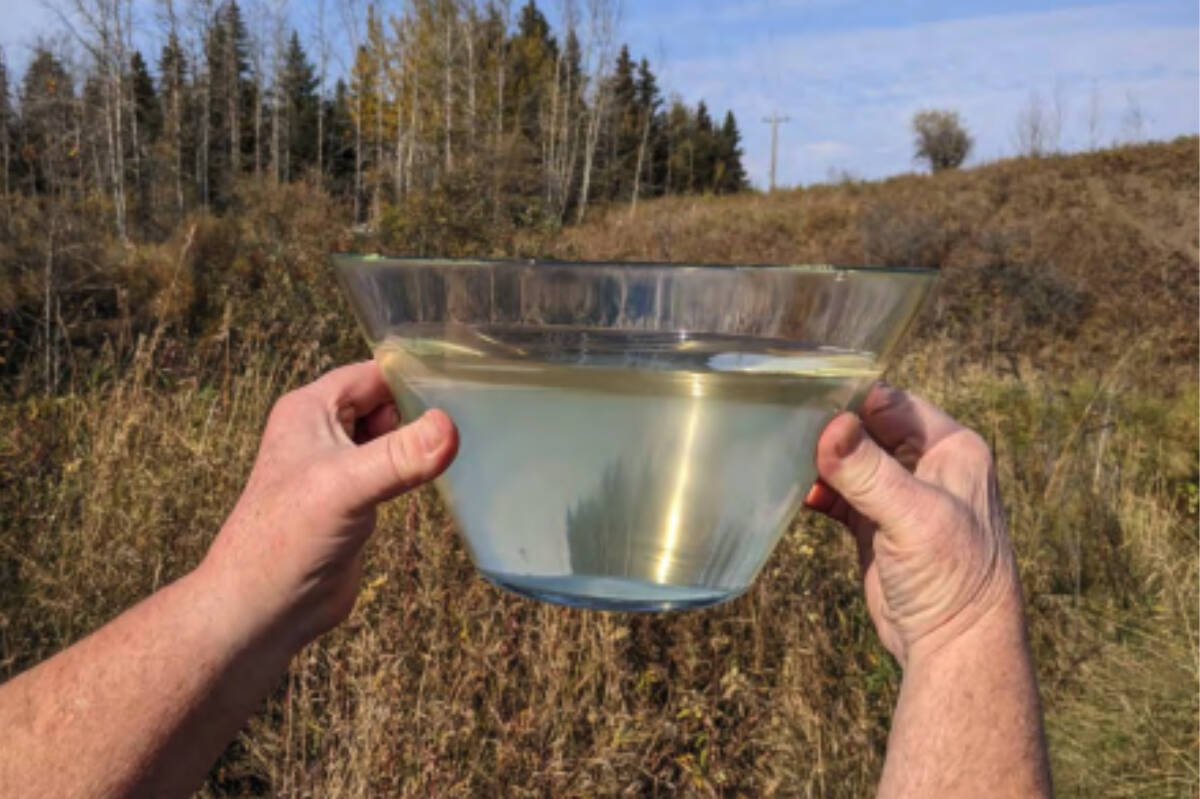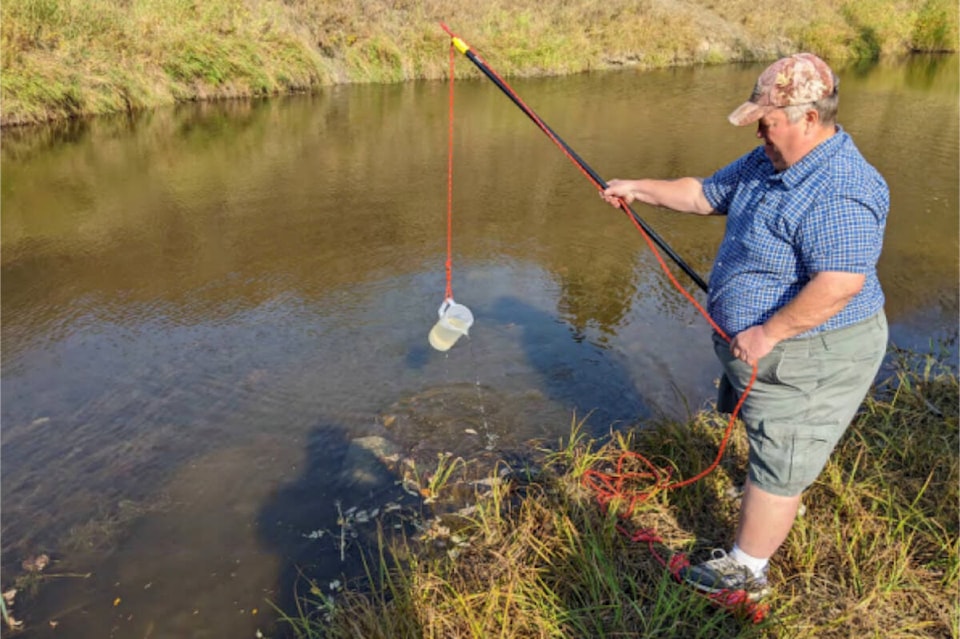Central Alberta’s Medicine River will be tested this summer to try to solve the mystery of its distinctive brown colour and whether agriculture plays a role.
Medicine River Watershed Society volunteers undertook limited testing last year that appeared to show river quality had improved since the last extensive round of testing in 2006 and 2007, said society board member Dana Kreil.
However, the results came from a small sampling size and testing was done too late to capture spring runoff.
This year, the society in partnership with Red Deer River Watershed Alliance has hired an Olds College student to undertake an expanded testing program at more sites to create a more detailed picture of the river’s health, whether it has improved and hopefully nail down what is behind the river’s noticeably brown tint.
Testing done on the river in 2006 rated it as fair, with nutrient and bacteria concentrations higher than provincial or federal guidelines for the protection of aquatic life and drinking water for livestock or human consumption.
In 2007, further testing was done and the results were significantly worse and the river rating was downgraded to poor. The timing of testing and recent flooding may have played a role in the worse numbers.
A Red Deer River Watershed Alliance “State of the Watershed” report in 2009 rated the Medicine River sub-watershed as poor and gave it a C- ranking.
Society member Dana Kreil said some testing was done in 2022 through a partnership with Creekwatch, a citizen-led group that provided testing kits.
“What we found from that is possibly the river is improving a little bit,” she said.
Turbidity tests, which measure the amount of suspended matter in the water, came up quite clear.
It is thought the river bottom may be the cause of the coloration.
“As far as we can tell the river isn’t brown because of a bad thing. Way up at the headwaters it is already brown. Some people surmise that it’s peat moss staining because (the river) runs through a lot of lowlands at the headwaters.”
The society has applied for a $9,250 watershed stewardship grant for a water sampling probe, to help pay for a student, travel costs and to help fund public presentations to highlight the results. Town of Eckville has also been approached to share their testing results from sampling upstream and downstream of its sewage plant. Those results have not shown any results of concern.
Board member Murray Welch said it is hoped the testing will show whether the river has changed over the last 15 years.
“It’s still brown, but is it as brown? There’s nothing quantitative to be able to say whether anything has improved,” said Welch.
“A lot has changed in the agricultural world, as far as intensive grazing and feedlots and all the rest of that. That may have improved things but we don’t know that because nobody’s done any further testing.
“Why is another objective. What’s making the river brown and is there anything we can do about it.”
Medicine River meanders about 400 kilometres while covering a straight line distance of around 80 kilometres. It is fed only by runoff and springs and has so little grade the water moves extremely slowly outside of runoff. So much so, some have said it can almost be described as a very long lake in the summer.
The 2006 and 2007 reports insinuated that agriculture and phosphates, nitrates and sulfates, commonly found in crop fertilizers, contributed to the discoloration.
“But it wasn’t really quantified or proven that this contaminant was definitely from cattle.”
Testing for turbidity, nutrients and bacteria showed good results. While the results were encouraging, they did not offer enough proof that agriculture, silt or peat moss were having an impact on the river.
If the water is clear, something else must be making it appear brown. Silt or decaying vegetation on the river bottom could be involved. Another possibility is the wetlands and peat bogs the river flows through at its headwaters may colour the water.
Welch is hoping more testing can be done upriver to shed light on the peat moss theory.
Testing is also planned around the confluence with Horseguard Creek, which passes through an area with a lot of agriculture. By sampling there, a better picture of the impact of agriculture might be achieved.
Test results upstream and downstream of Town of Eckville’s sewage lagoon will offer insight into whether it has any impact and serve as a verification of the town’s own testing.
This year’s testing has already got off to a better start. Testing began last week, six weeks earlier than last year when spring runoff was missed entirely. An earlier start combined with more samples taken from more locations offers the promise of getting a much better assessment of the river’s health.

